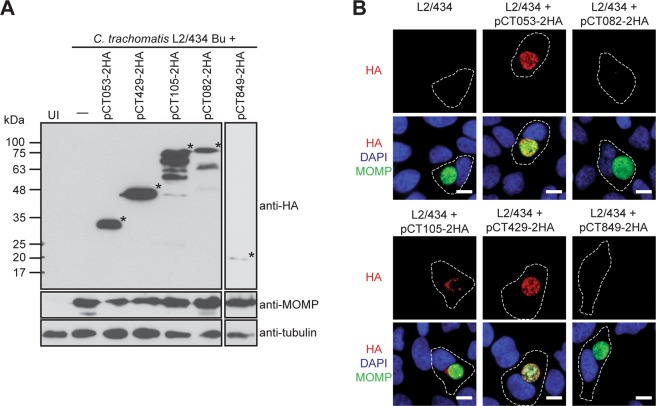Figure 1.
The chlamydial candidate T3S effector CT105 is delivered by C. trachomatis into the cytoplasm of infected cells. HeLa cells were either left uninfected (UI) or infected by C. trachomatis L2/434-derived strains harboring the indicated plasmids, encoding candidate T3S effectors (CT053, CT429, CT105, CT082, CT849) with a 2HA epitope tag at their C-termini. (A) At 40 h p.i., whole cell extracts were analyzed by immunoblotting with antibodies against HA, MOMP (bacterial loading control) and α-tubulin (HeLa loading control) using SuperSignal West Pico detection kit (Thermo Fisher Scientific), or SuperSignal West Femto detection kit (Thermo Fisher Scientific) for CT849-2HA. Asterisks indicate the bands likely corresponding to the full-length proteins. Whole immunoblots are presented in Supplementary Fig. S1. (B) At 20 h p.i., cells were fixed with 4% (w/v) PFA, stained with DAPI (blue), immunolabeled with antibodies against HA (red) and C. trachomatis MOMP (green), and appropriate fluorophore-conjugated secondary antibodies, and imaged by fluorescence microscopy. Scale bars, 10 µm.

